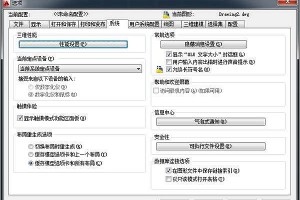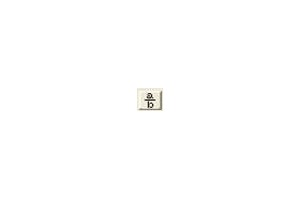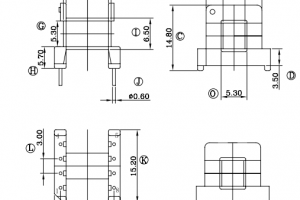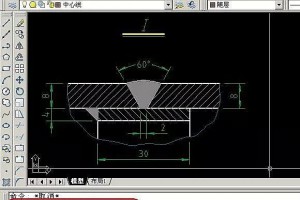Liquid ring vacuum pumps help solve the problem of handling “wet” gas mixtures.
Liquid ring vacuum pumps are commonly used to handle “wet” gas mixtures (i.e., mixtures containing condensable vapors). The moisture present in such mixtures can wash away the lubricating oil in traditional “dry” oil lubricated pumps, possibly leading to premature failure.
As the impeller of the vacuum pump rotates, it throws water by centrifugal force to form a liquid ring concentric with the periphery of the casing which does the work of compression. The eccentric mounting of the impeller with respect to the casing results in increased spacing between the impeller blades at the inlet port and decreased spacing towards the outlet port (Figure 1). As gas enters the inlet port, it is trapped between the impeller blades and the liquid ring. Then, as the impeller rotates, the liquid ring compresses the gas and forces it out the outlet port.

The information needed to accurately size a liquid ring vacuum pump includes:
• inlet pressure, usually expressed in mm HgA
• inlet temperature
• mass flow rate, usually expressed in LB/hr and the molecular weight of fluid components
• vapor pressure data for each fluid component
• seal fluid data, if other than water: specific gravity, specific heat, viscosity, thermal conductivity, molecular weight and vapor pressure data
• temperature of the seal fluid or cooling water
• discharge pressure, usually expressed in PSIG Each of these factors influences the sizing of the liquid ring vacuum pump.
Liquid ring vacuum pump manufacturers are able to determine if cavitation can result from a particular application. Cavitation occurs as a result of rapid boiling of the seal liquid. During boiling, bubbles form in the liquid and seek to escape. As the bubbles rise in the liquid, they are subjected to higher pressure zones and can collapse. The void of space that is left after the bubbles collapse is instantly filled with liquid. This phenomenon leads to extensive erosion or pitting of the pump internals.
Cavitation can be detected by a rumbling noise that sounds like marbles rolling around inside the pump. This sound should not be confused with that occurring as a result of “water hammer.” If the seal fluid vapor pressure is near the operating inlet pressure of the vacuum pump, then the sound heard is most likely from cavitation.
If the liquid ring pump is disassembled and the impellers and port plates are pitted, cavitation is evidently occurring. A liquid ring pump with flat port plates can be easily machined and reassembled. In contrast, a liquid ring pump with conical ports is more difficult to machine because of the taper and angle of the cone.
Possible ways to eliminate cavitation are:
• Use a colder seal fluid. This will lower the vapor pressure of the seal fluid and keep it from flashing.
• Use a seal fluid with a lower vapor pressure. This will prevent the seal fluid from flashing and causing cavitation. The seal fluid should be compatible with the process gas mixture and the materials of construction. Certain accessories may need to be re-designed to operate with this different seal fluid.
• Increase the inlet operating pressure (if this pressure will be tolerated by the process) beyond the range of cavitation.
• Check the loading and operating pressure. If the load is less than design, the pump may be operating at a lower absolute pressure, which may lead to boiling of the seal liquid and cause cavitation. A vacuum relief valve or air bleed valve can be used to introduce additional load so the pump will be able to operate closer to the design pressure.
• Install a booster upstream of the liquid ring vacuum pump. The booster will compress and raise the absolute pressure of the vacuum pump suction. There are many types of boosters, but the simplest type is an ejector that has no moving parts. An ejector works by using pressure energy of the motive to increase the velocity of the entrained gas load. This produces a higher absolute pressure at the outlet of the ejector. Two types of ejectors are a steam ejector which uses pressurized steam, and an atmospheric air jet which uses atmospheric air as the motive.
• Increase the throughput of seal fluid, if possible. This will decrease the temperature rise of the liquid ring pump and lower the vapor pressure of the seal fluid.
Many liquid ring vacuum pump manufacturers publish dry air curves with 60°F seal water (Figure 2). From these curves, corrections are made to take into account actual operating conditions.
When a seal fluid other than water is used, the liquid ring vacuum pump manufacturer will require the specific gravity, specific heat, viscosity, molecular weight, and vapor pressure data to accurately correct the dry air curves.
By knowing the vapor pressure of the seal fluid, the manufacturer is able to check for cavitation and also determine its effect on capacity. If the vapor pressure of the seal fluid is less than that of water, then the dry air capacity of the pump is increased. This is because less of the seal fluid will flash and take up space between the impeller blades. The opposite is true if the seal fluid vapor pressure is greater than that of water.
The operating horsepower can be calculated by knowing the specific gravity and viscosity of the seal fluid. The pump curves are usually based on water as the seal fluid, and then the increase or decrease of operating or brake horsepower is determined. The higher the specific gravity and viscosity, the more brake horsepower the pump requires to operate. If the seal fluid is an oil, then the brake horsepower is usually less than that using water and the opposite is true if it is ethylene glycol.
The type of load that the liquid ring pump handles affects its capacity. The two basic types are a dry air load and a saturated air mixture.
For a dry air load, the air enters through the inlet port into the impeller bucket where it contacts the seal fluid. The dry air instantly saturates itself by evaporating water from the liquid ring.
The water from the liquid ring that is evaporated takes up space in the impeller bucket. This reduces the amount of new incoming air load that the impeller bucket can handle, which may result in the selection of a larger vacuum pump.
For a saturated air mixture, the load enters through the inlet port into the impeller bucket, but if the seal fluid is cooler than the incoming gas mixture, condensing will occur. This allows more room in the impeller bucket to handle additional incoming gas and use of a smaller vacuum pump.
The only way the manufacturer can correctly size the liquid ring vacuum pump is by knowing the individual gas components and properties that make up the mixture. This will allow the manufacturer to make proper corrections and choose the best pump.
The discharge pressure of the pump is needed to determine any reduction of pump capacity or any increase in operating horsepower. Most liquid ring vacuum pumps are designed to operate from a vacuum suction to an atmospheric discharge pressure. If the discharge pressure is increased, then more energy or brake horsepower is required to operate at the increased compression range. By changing the discharge pressure, the efficiency of the pump is changed and the capacity of the pump may be reduced to compensate for this greater compression range.
Visual inspection should be performed once the liquid ring pump is up and running. The vacuum level, seal fluid temperature and seal fluid pressure should be checked and compared with the design conditions. The bearing housing should be warm to the touch. A hot bearing housing can indicate a bad or worn bearing, or misalignment.

A liquid ring vacuum pump is a very versatile machine. It can handle “wet” loads and has no metal-to-metal contact. It also acts like a direct contact condenser; it can absorb the heat generated by the compression, friction and condensation of the incoming gas; and it will absorb and wash out any contaminants entrained in the gas. In spite of this versatility, however, sizing and selection of the most economical system still requires full information concerning not only what fluids it will handle, but how it will be operated.
Joseph Aliasso is Applications Engineer for Graham Manufacturing Batavia, NY. He holds a BSME degree from the University of Buffalo, NY.





 浙公网安备: 33028102000314号
浙公网安备: 33028102000314号